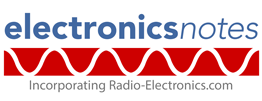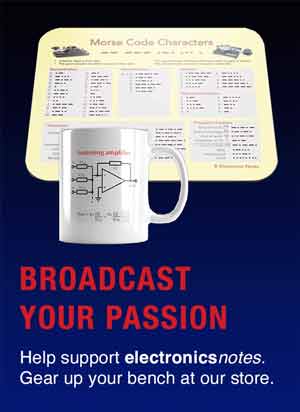Home » Component data » JFET data » this page
J112 JFET Data
Data for the J112 JFET including electrical parameters, maximum current and voltage, pin connections, package type and many other datasheet details.
The J112 is a leaded N-channel junction field-effect transistor (JFET) primarily known for its use as a fast analogue switch in high-input impedance applications.
The J112 is very similar to the J111, although there are some differences int he values for its VGS(off), IDSS and a few other characteristics.
Key details and performance parameters for the J112 JFET.
| J112 JFET datasheet parameters & data |
|
|---|---|
| Parameters | Details |
| Brief description | N-channel depletion switching FET |
| Package type | TO92 |
| Operational mode | Depletion |
| Channel type | N-channel |
| Gate to Source voltage VGS | -35V DC |
| Drain to gate voltage VDG | -35V DC |
| Gate current IG | 50mA DC |
| Drain cutoff current ID(off) | 1.0nA max |
| Zero gate voltage drain current IDSS | 5mA min |
| Gate threshold voltage VGS(th) | |
| Static drain source ON resistance RDS(ON) | 30&Oega; max |
| Gate source cutoff voltage VGS(off) | -1.0V min, -5.0V max |
| Forward transconductance gFS | |
| Drain gate and source ON capacitance Cdg(on) | 28pF max |
| Drain gate OFF capacitance Cdg(off) | 5.0pF max |
| Source gate OFF capacitance Csg(off) | 5.0pF max |
| TJ °C | -65 - +150°C |
| PTOT mW | 350mW |
| Primary manufacturer | ON Semiconductor |
Outlines & pinout:
Explanation of JFET parameters
| Parameter | Explanation |
|---|---|
| Operational mode | This details whether the FET is an enhancement or depletion mode |
| Channel type | The channel of the JFET can either be an N-type channel where electrons are the majority carriers or P-type where holes are the majority current carrier. |
| Drain to Source voltage VDSS | This is the maximum voltage that can be sustained between the drain and source |
| Gate to source voltage VGSS | This is the maximum voltage that can be sustained between the drain and the gate. |
| Maximum drain current continuous ID | This is the maximum current that can be carried byt he device. Sometimes there may be a differentiation between the continuous and pulsed or peak values |
| Parameter | Explanation |
|---|---|
| Zero gate voltage drain current IDSS | This is the current carried by the device when the gate voltage is zero. The test conditions are normally stated for this. |
| Gate threshold voltage VGS(th) | This is the minimum gate-to-source voltage, VGS required to create a conductive channel between the source and drain terminals |
| Static drain source ON resistance RDS(ON) | This is the resistance of the device when turned on. The test conditions of voltage and current are normally given for this. |
| Drain source ON voltage VDS(ON) | This is the voltage across the device when it is turned on. Again the test conditions are given. |
| Forward transconductance gFS | Forward transconductance also given the letters gm is defined as the change in drain current (ΔID) for a small change in the gate-source voltage ΔVGS, with the drain-source voltage, VDS held constant. |
These are the main JFET parameters that have been included in our list. There are others, but these are the main ones and they help quantify the main elements of the performance.
Please note, that the data given is the best estimate we can give within a tabulated summary of this nature. Parameters also vary between manufacturers. Electronics Notes cannot accept any responsibility for errors, inaccuracies, etc, although we do endevaour to ensure the data is as accurate as possible.
Notes and supplementary information
• Availability & sources
The J112 is available from a number of stockists and electronic component distributors many of which are given in the table below.
J112 Component Distributor, Stock and Pricing
• Further details
The J112 chopper JFET is similar to the J111 which has slightly different values of VGS(off), IDSS and a few other characteristics.
The key characteristics of the J112 include a very low rDSon and high transconductance, making it highly effective for chopping and sample-and-hold circuits.
Despite its good performance as a chopper or switch, the J112 is also often used as a general purpose JFET.
• Interesting facts
The J112 possesses several unique features stemming from its fundamental JFET architecture that can be surprising compared to more common Bipolar or MOSFET transistors:
Depletion mode device: The J112 is a Depletion-Mode device. This means that:
- When no voltage is applied to the Gate (VG=0V), the channel is fully open, and the device is ON (low resistance).
- To turn the switch OFF (high resistance), a negative voltage must be applied to the Gate to "deplete" or pinch off the channel.
This contrasts with the common enhancement-mode MOSFETs used in digital logic, which are normally OFF at 0V.
Pins Are Interchangeable For low-voltage switching applications, the J112 is electrically symmetrical. This means the Drain and Source terminals are interchangeable.
This simplifies layout and allows a single device to operate as a bidirectional switch, passing a signal equally well in either direction—a critical requirement for accurate AC or bidirectional analog signal switching.
Extremely High Input Impedance: Due to its design, the JFET's gate terminal acts like a reverse-biased diode. This results in an incredibly high input impedance and extremely low Gate Reverse Current (as low as 1.0 nA maximum).
In practical terms, this means the J112 draws virtually no current from the signal driving the gate, making it an excellent component for high-input impedance applications where a source must be measured or controlled without loading it down.
It Is Used in Vintage Guitar Effects: Despite its technical role in data acquisition and instrumentation, the J112 and similar switching JFETs are highly prized in the DIY audio and guitar pedal communities. They are used to create the clipping stages of distortion and overdrive circuits, as well as the low-noise analog switches in bypass or delay loop circuits. Its high impedance is key to preserving the guitar signal's integrity.
• Example applications
| Application Category | Key Use | J112 Feature Utilized |
|---|---|---|
| Precision Analog Switching | Analog Switches, Multiplexers, and Commutators | Its very low Static Drain-Source On-Resistance ($r_{DS(on)}$), typically 50Ω maximum, ensures minimal voltage drop and distortion when the switch is closed. |
| Data Acquisition | Sample-and-Hold (S/H) Circuits | The J112's fast switching speed (low rise/fall times) and low capacitance allow it to connect and disconnect quickly, accurately capturing and holding a precise voltage level before it can change. |
| Signal Processing | Chopper Stabilized Amplifiers & Modulators | Used to rapidly switch signals at high frequency (chop) to convert DC signals to AC for easier, low-noise amplification, then convert back. The J112's high speed and low noise are crucial here. |
| Current Control | Current Limiters | It can be configured to act as a two-terminal current regulator, leveraging its characteristic of holding a stable Drain current ($I_{DSS}$) once saturated. |
 Written by Ian Poole .
Written by Ian Poole .
Experienced electronics engineer and author.
Return to Component Data menu . . .




